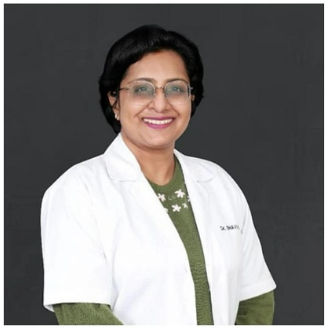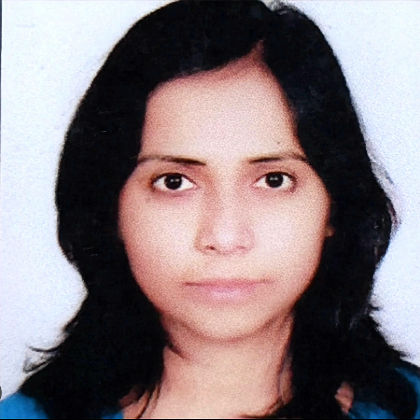Callus Causes and Treatment
Discover the common causes of calluses and effective treatment options to reduce discomfort. Learn tips for prevention and maintaining healthy, smooth skin.

Written by
Last updated on 3rd Jul, 2025
Calluses refer to the buildup of hard, thick layers of skin. It can develop on any part of an individual’s body, but the most common areas are generally the feet, hands, and fingers.
More often than not, calluses are confused with corns. Essentially, they are the same tissue, but corns tend to be small and round and more focal. Calluses, on the other hand, are more superficial. They cover broader areas of the skin and are generally asymptomatic.
Let’s understand the different causes of callus and how they can be treated effectively with a few simple measures.
Causes of Calluses
There are various reasons why someone can develop calluses. One of the most common causes is wearing shoes that don’t fit properly. Shoes that are too tight or have areas that rub against the skin cause friction and pressure. Therefore, individuals who frequently wear such shoes often develop calluses on the balls of their feet.
In addition to this, calluses can occur from standing, or walking for long periods of time. Individuals who prefer to go barefoot or do not wear socks with their footwear are more prone to developing this hardened layer of skin or calluses.
Other contributing factors may include:
Walking with improper posture
Walking too heavily on the inner or the outer edge of the foot
Structural foot deformities
Symptoms and Identifications
Calluses typically are asymptomatic. But, in some cases, if the pressure is extreme, they can become thick and irritated. This can result in mild discomfort for individuals. Calluses are generally round-shaped and yellowish in colour. They look like thick skin and are relatively hard and rough.
As stated, some of the most common locations of calluses are on the hand and feet. To be more specific, they develop in the palms and fingers. In the feet, they form on the balls of the foot, typically under the bony protrusions at the base of the toes.
If a callus becomes too painful and inflamed, it is recommended to visit a healthcare provider.
Furthermore, people suffering from diabetes or poor blood flow must seek medical attention before self-treating a callus. This is because even the most minute injury to the foot can lead to drastic consequences, such as ulcers.
Consult Top Doctors For Callus Symptoms
Diagnosis
Healthcare professionals generally diagnose calluses by examining the feet. At first glance, they might be confused with warts or cysts. To confirm the diagnosis, a medical expert will pare away a bit of the hardened skin. After paring, the callus will show smooth, translucent skin.
In the case of a wart, the paring will reveal blood or black points (dried blood), representing thrombosed capillaries (tiny blood clots blocking the flow of blood).
Treatment Options
There are multiple ways by which calluses can be treated.
1. Home Remedies and Care
Mentioned below are some of the many effective strategies that individuals can try from the comfort of their own house.
Manually removing the hyperkeratotic tissue (thickened callused skin) through a nail file, emery board, or pumice stone, after bathing.
Using exfoliating creams or lotions daily to remove the dead skin cells. Most of these ointments are marketed as callus treatments and can be purchased from a drugstore or even online.
Applying a baking soda paste to the affected area and covering it with socks, gloves, or a gauze bandage.
Applying heavy moisturising cream, or petroleum jelly, like Vaseline, to callused areas and leaving it overnight. This can help soften the calluses and prevent the area from drying.
Using protective cushions, such as padded gloves (if the callused area is on a person’s hand), to protect the area and allowing it to heal over time.
2. Medical Treatments
Individuals can also ask a healthcare specialist to offer treatments for calluses:
Keratolytics can be used to treat calluses. These are topical dermatologic treatments recommended by healthcare experts.
A foot specialist may offer patches to soften the hard skin, which will help to remove the callus effectively.
Individuals might be asked to wear custom-made soft pads or insoles to relieve the pressure off the affected area in their feet.
In case of an infection, a healthcare professional can prescribe antibiotics.
Typically, calluses are treated without surgery. But, if it is caused by a bone structure, such as a hammer toe or bunion, surgery may be needed to remove it. However, this treatment option is only considered when others have failed.
Preventative Measures
Here are a few tips and tricks on how you can avoid getting calluses.
Check your shoe size: Make sure that you wear shoes that fit properly. Get sized up regularly when you buy shoes since your feet can grow and change as you age.
Cushion/Control: Check for adequate insole padding within your shoes. This is especially important for those individuals who have a lot of bony prominences or are at higher risk of developing pressure sores.
Avoid wearing pointy-style shoes: It is always advisable to wear rounded or square-toed shoes. They typically reduce the chances of the feet rubbing against the interior of the toe area.
Foot care: It is important to exfoliate and moisturise the feet regularly. This will help prevent the thickening of roughed skin.
Wear gloves: People who do things like gardening often or use tools like a hammer or a rake must always wear gloves to protect their hands.
Complications
If left untreated, calluses can spread into the skin around them, further hardening the skin. A thickened callus can eventually lead to an ulcer. The worst thing about ulcers is that they do not heal and can very easily get infected. This can potentially result in more severe complications like a bone infection and/or gangrene (death of a body tissue). In worst scenarios, it can lead to a foot amputation.
People suffering from diabetes must especially be very careful with calluses. Injuries to their feet can go unnoticed and can become very serious very quickly. Therefore, it is always recommended for such individuals to treat calluses immediately before they turn out to be a potential problem.
Conclusion
Calluses are not generally something to worry about. They are not caused by any virus, nor are they contagious. They can be very easily prevented by following the above-mentioned tips, such as wearing the right shoe size, moisturising regularly, wearing gloves, and so on.
However, individuals who experience pain from calluses or are suffering from diabetes or circulatory problems must visit a healthcare expert. A thorough examination of the affected area can help safely remove such calluses before they grow into a concerning size.
Consult Top Dermatologist
Consult Top Doctors For Callus Symptoms

Dr. Yogesh H R
Dermatologist
21 Years • MBBS, MD
Bengaluru
Apollo Hospitals Jayanagar, Bengaluru

Dr. S Madhuri
Dermatologist
10 Years • MBBS, MD. DVL, DNB, Fellow (Dermatosurgery & Lasers)
Secunderabad
Apollo Hospitals Secunderabad, Secunderabad
(300+ Patients)

Dr. Bhavya Swarnkar
Dermatologist
14 Years • MBBS, MD, DNB (Dermatology, Venereology & Leprosy) Former Senior Resident, Department of Dermatology- AIIMS, New Delhi. Associate Consultant - Dermatology.
Bilaspur
Apollo Hospitals Seepat Road, Bilaspur
(225+ Patients)

Dr. Bhavyashree U G
Dermatologist
14 Years • MBBS, MD Dermatology, Venereology & Leprosy
Bengaluru
Bhavyas skin and hair center, Bengaluru

Dr. Somshukla Ray
Dermatologist
10 Years • MBBS, MD (Dermatology,Venerology & Leprosy), DNB (Dermatology,Venerology & Leprosy)
Kolkata
MCR SUPER SPECIALITY POLY CLINIC & PATHOLOGY, Kolkata
(25+ Patients)
Consult Top Dermatologist

Dr. Yogesh H R
Dermatologist
21 Years • MBBS, MD
Bengaluru
Apollo Hospitals Jayanagar, Bengaluru

Dr. S Madhuri
Dermatologist
10 Years • MBBS, MD. DVL, DNB, Fellow (Dermatosurgery & Lasers)
Secunderabad
Apollo Hospitals Secunderabad, Secunderabad
(300+ Patients)

Dr. Bhavya Swarnkar
Dermatologist
14 Years • MBBS, MD, DNB (Dermatology, Venereology & Leprosy) Former Senior Resident, Department of Dermatology- AIIMS, New Delhi. Associate Consultant - Dermatology.
Bilaspur
Apollo Hospitals Seepat Road, Bilaspur
(225+ Patients)

Dr. Bhavyashree U G
Dermatologist
14 Years • MBBS, MD Dermatology, Venereology & Leprosy
Bengaluru
Bhavyas skin and hair center, Bengaluru

Dr. Somshukla Ray
Dermatologist
10 Years • MBBS, MD (Dermatology,Venerology & Leprosy), DNB (Dermatology,Venerology & Leprosy)
Kolkata
MCR SUPER SPECIALITY POLY CLINIC & PATHOLOGY, Kolkata
(25+ Patients)
